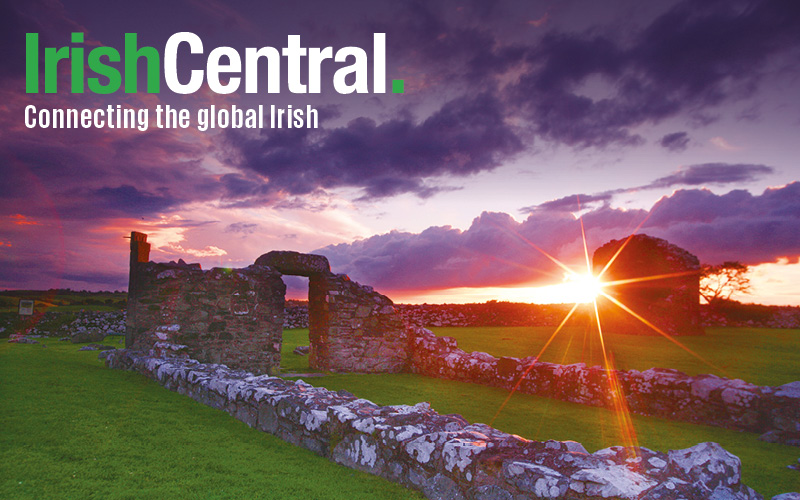Findmypast is working in partnership with IrishCentral to share fascinating insights into your Irish ancestors. Click here to get a special half price subscription, and discover your Irish roots today!
At Halloween, it seems only natural that the topic of cemeteries should arise. While this season brings out tales of ghosts, witches, and other superstitions within graveyards, genealogists are all too familiar with the benefits of visiting cemeteries for further research.
On a recent weekend I found myself traipsing across New England on a quest to locate the graves of a few of my distant ancestors. In a single weekend I managed to visit 14 cemeteries across Massachusetts, New Hampshire, and Vermont. While some cemeteries were easier to locate than others, a few certainly stood out during the journey.
One of the most interesting stops was Wright’s Tomb, located in Vermont. My ancestor, David Wright had a fear of being buried alive and thus built an elaborate tomb on his property (complete with steps and a bell ringing system). David Wright, his wife, and a few close relatives are all buried inside. With no formal address, the tomb is simply located at the VA Cutoff Road in White River Junction, Vermont.
The largest cemetery I visited was the Mt. Pleasant Cemetery in St. Johnsbury, Vermont. Nestled on several rolling hills, the cemetery took a bit to navigate. It’s hills and trees make for a fantastic setting, though do lead to some complexities when hunting down gravestones. Yet here, nestled on a hill in the back part of the cemetery I found the graves of my relatives James and Abigail Snow (and even stopped to take a selfie, as only a genealogist might do in a cemetery).
Another cemetery took me for a bit of a hike. Buried deep in the woods (and across the railroad tracks) in the ‘Old Settlers Burial Yard’ of Lancaster, Massachusetts sits the hand carved gravestone of my ancestor Thomas Sawyer, who was born in Lincolnshire, England in 1616 and died in Lancaster, Massachusetts in 1706.
The final stop of the day was Pumpkin Hollow Cemetery, which seemed fitting for this Halloween cemetery trip. Also called the South Centre Cemetery in Conway, Massachusetts the gravestone of my ancestor Lucy (Parsons) Billings who died in 1793 sits in the corner of the cemetery, a bit weathered with age. Her husband, Rev. Edward Billing is buried in another town, just 5 miles away.
For those of you planning a visit to a cemetery, here are a few tips that made my trip a success:
• Plan your visit ahead of time. While some burial grounds are open from dusk to dawn, others might be closed. Determine who is responsible for maintaining the cemetery and make advance contact (if possible). Be sure to ask for clear directions to help you locate the cemetery. If the cemetery covers a large section of land, a map or register might help you identify the exact location of a marker or burial.
• Pay attention to the engravings and inscriptions. Engravings can reveal details about an ancestor’s membership in fraternal organizations, their marital status, and even cause of death. Inscriptions might also provide information beyond a birth or death date.
• Always ask for more. If the cemetery you are visiting has an onsite office, be sure to ask for any burial records they might have onsite. Burial records can provide with details of the plot owners, date of burial, and other vital information.
• Not every grave is marked. While tombstones can provide incredible details to add to your family tree, not every burial location is marked. Stones or markers might have disappeared over time, or have never been installed in the first place. A local historical or genealogical society might be able to provide a map or burial register to help identified unmarked graves.
• Share your photos. So many stones are difficult to read, sunken, or have disappeared. You can play a role in preserving your ancestor’s gravestones by sharing your photos with others. Attach your photos and other media from your trips to your Findmypast tree, to ensure their safe keeping.
• Start researching where your relatives might be buried online first to save time. The best place to look is Findmypast’s death and burial records.
Happy hunting!
For more stories on tracing your Irish heritage from Findmypast click here.




Comments